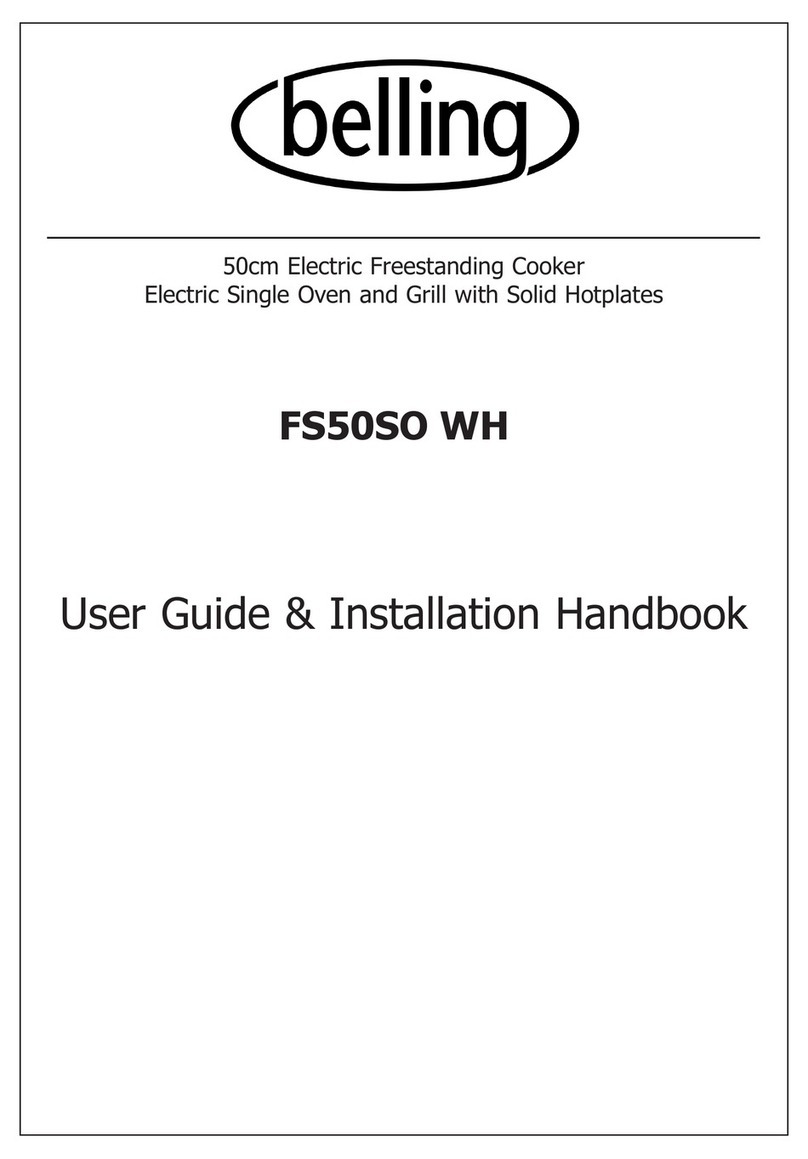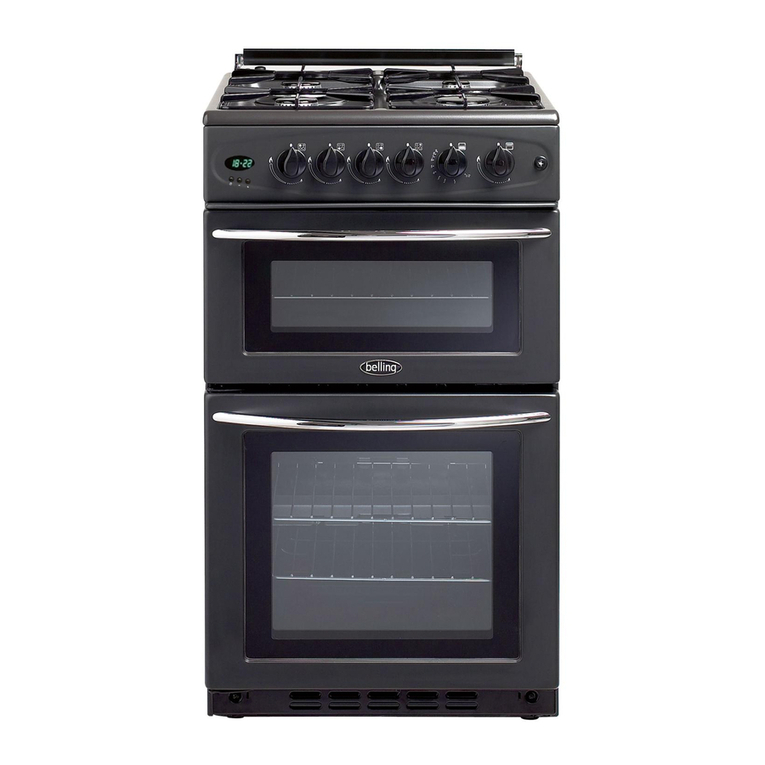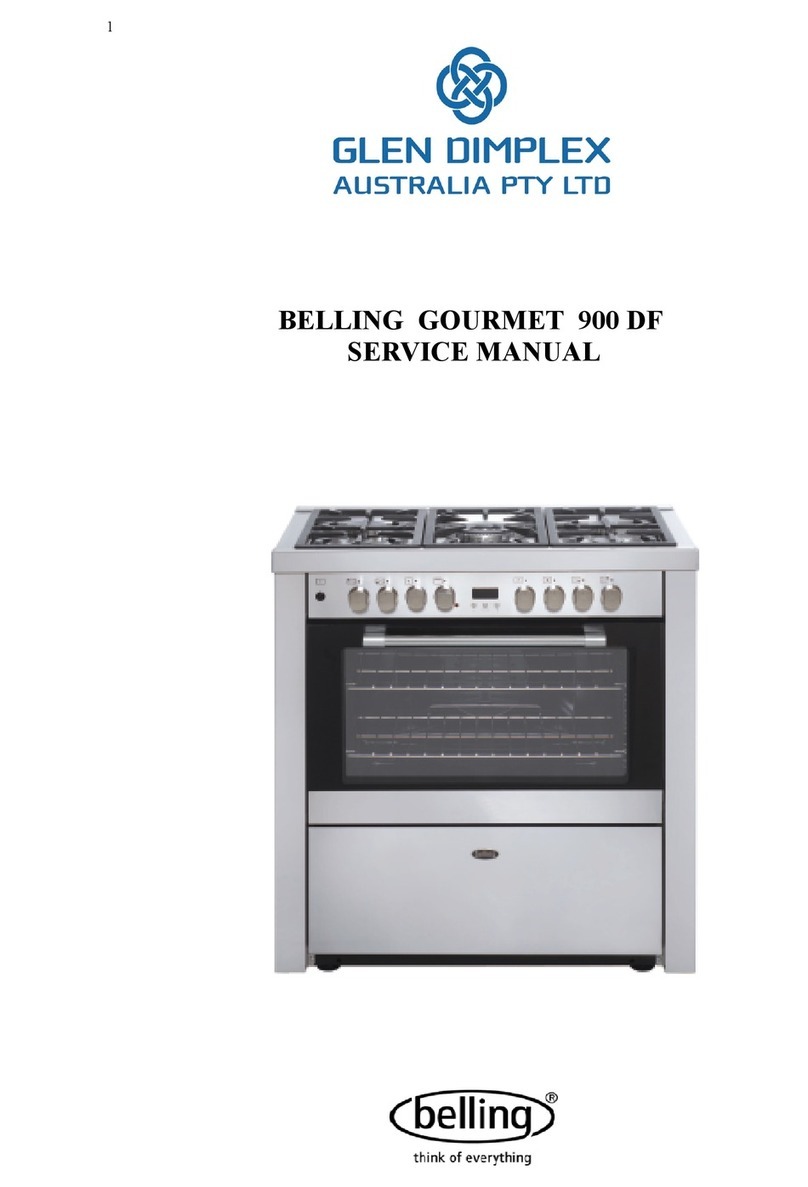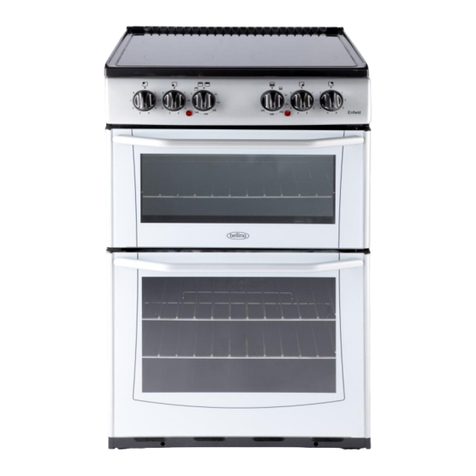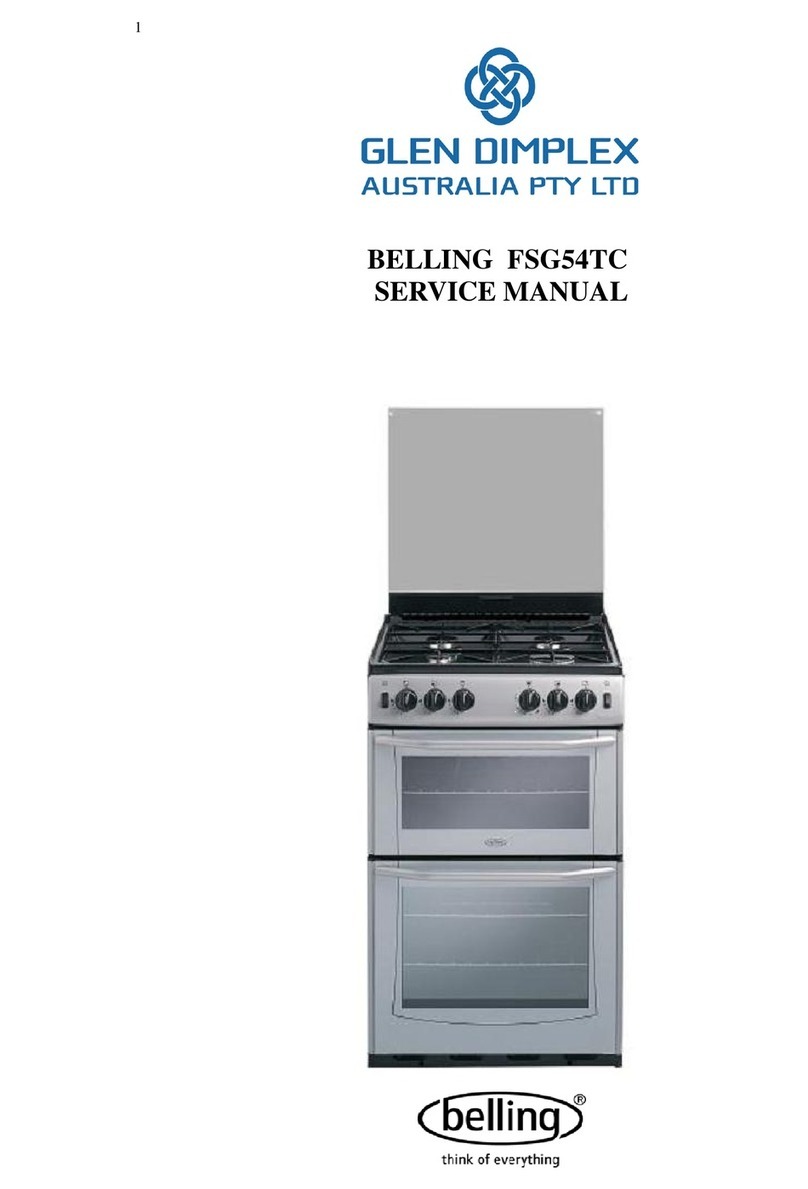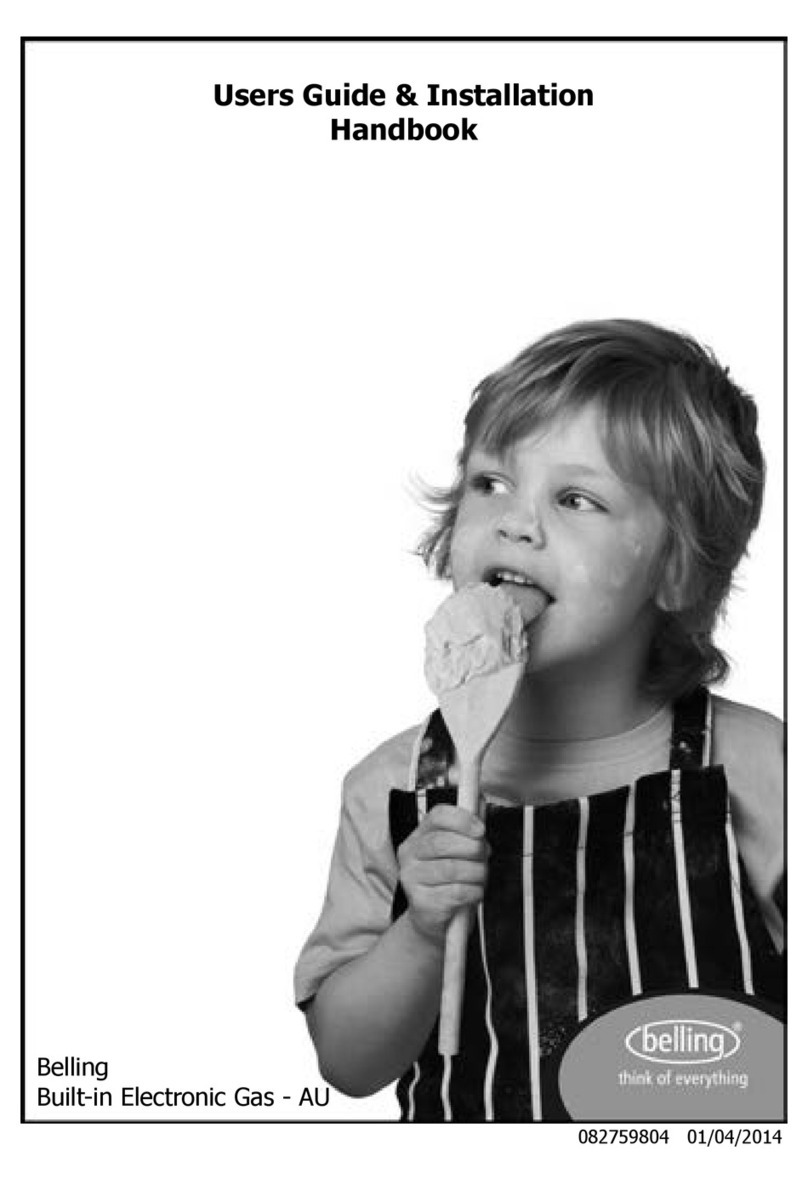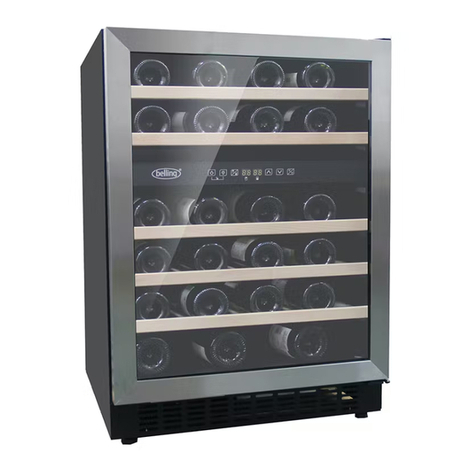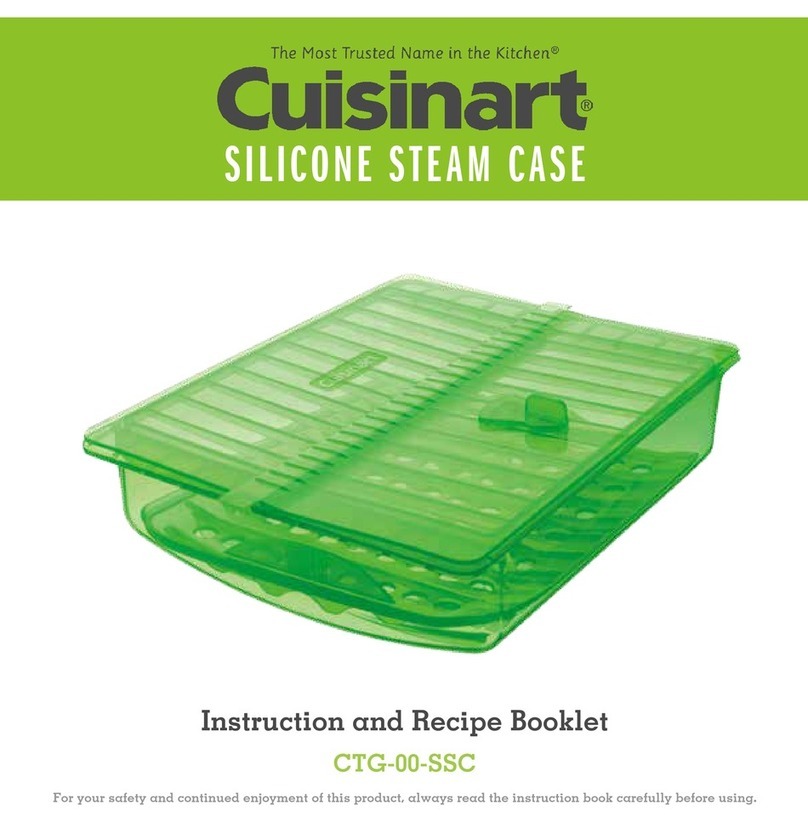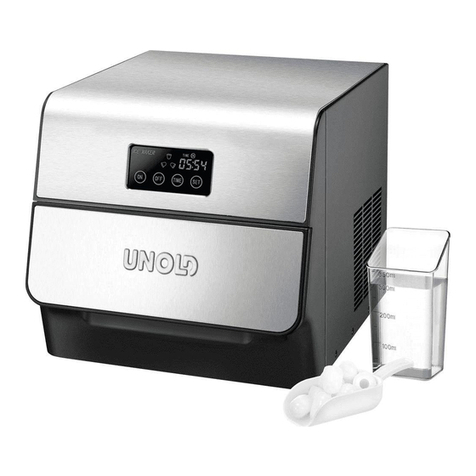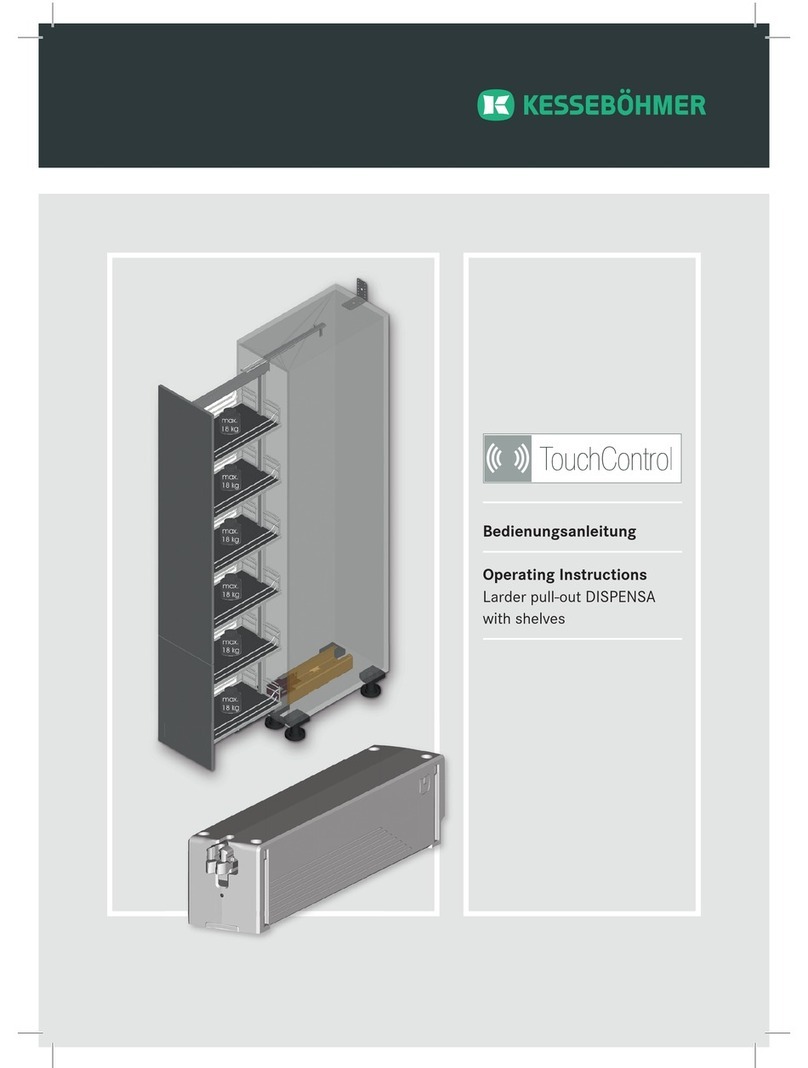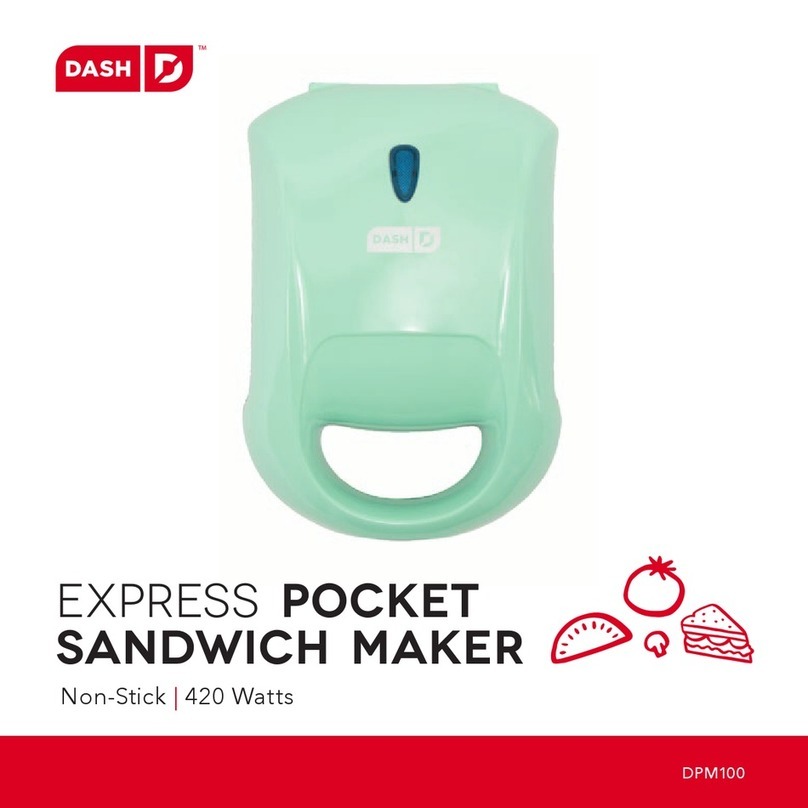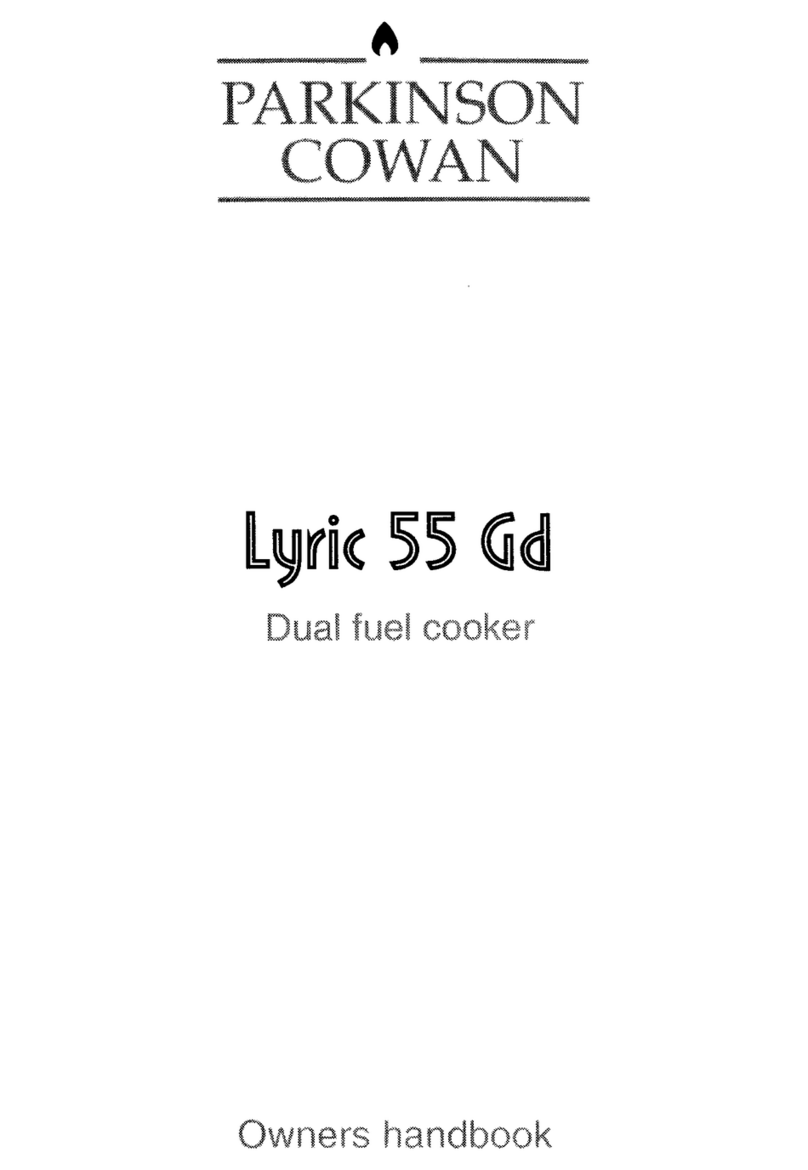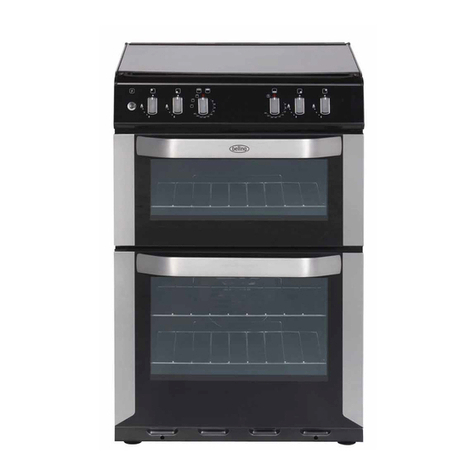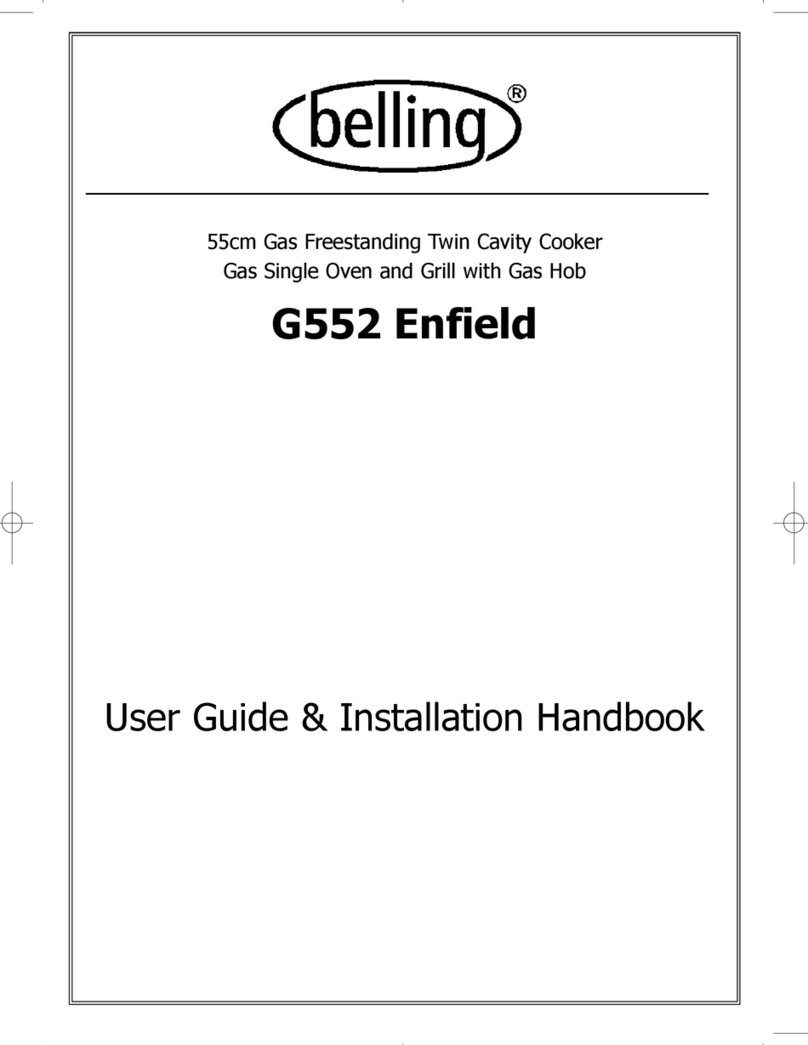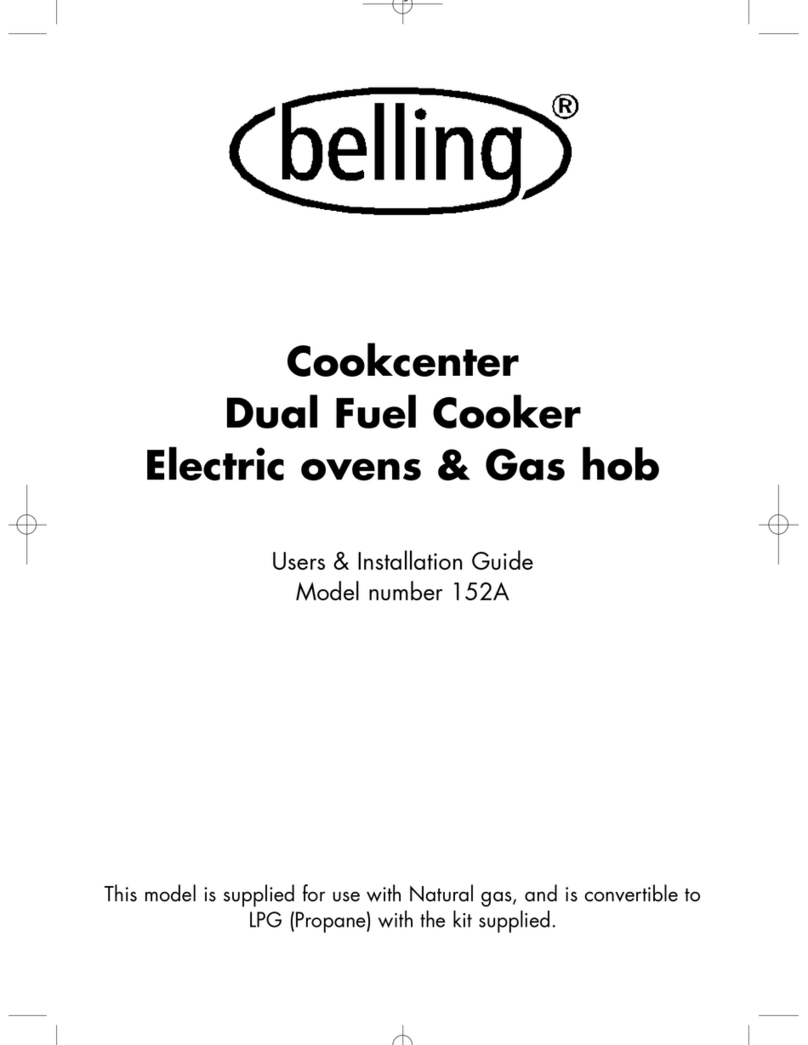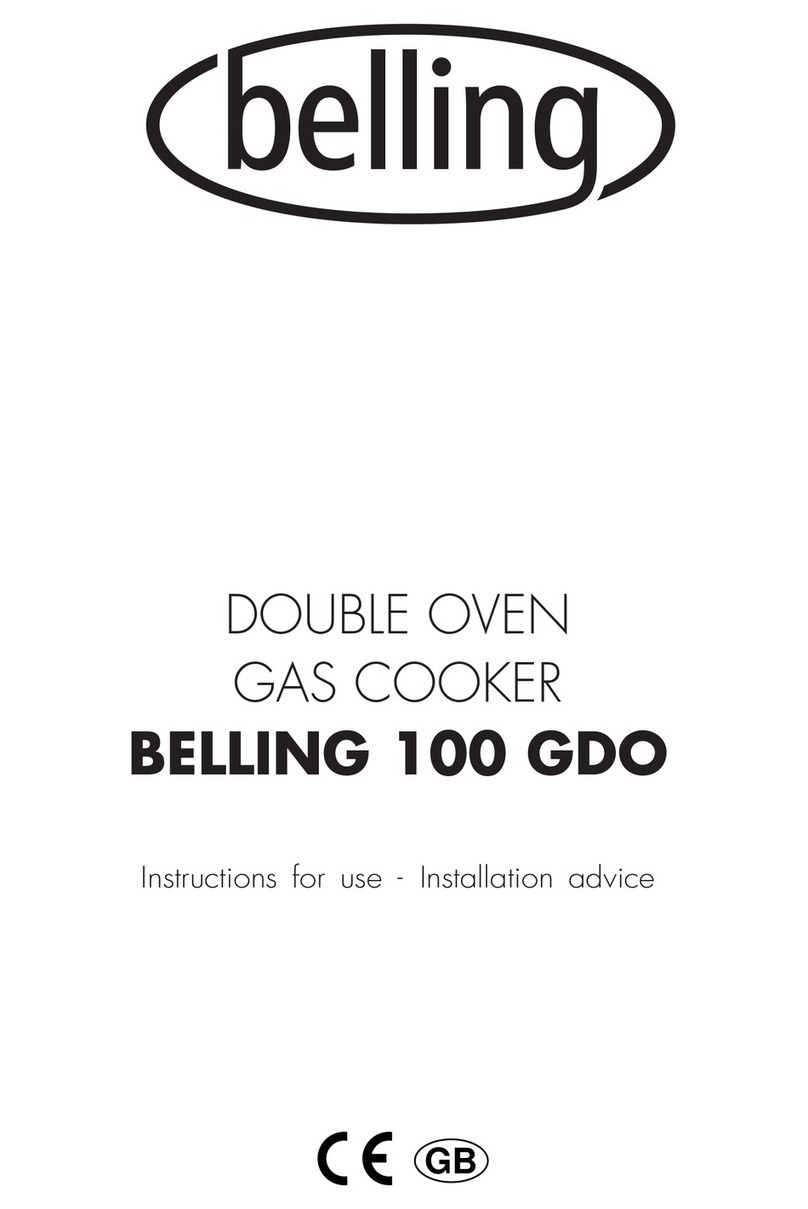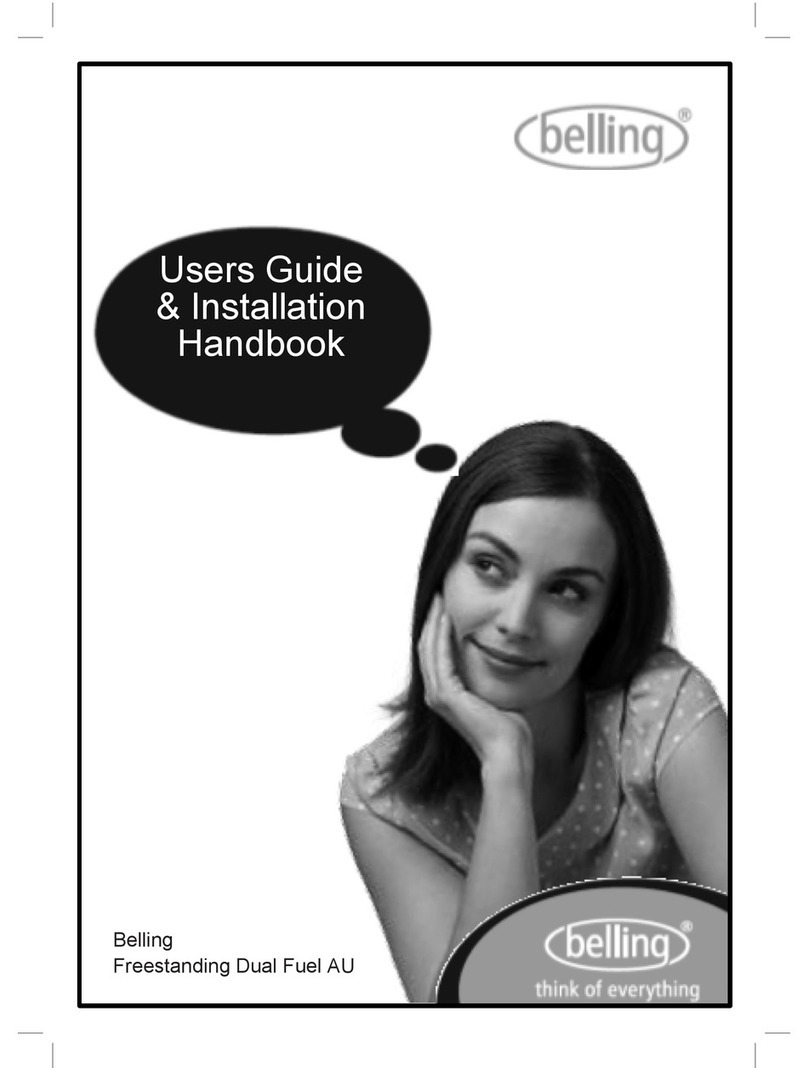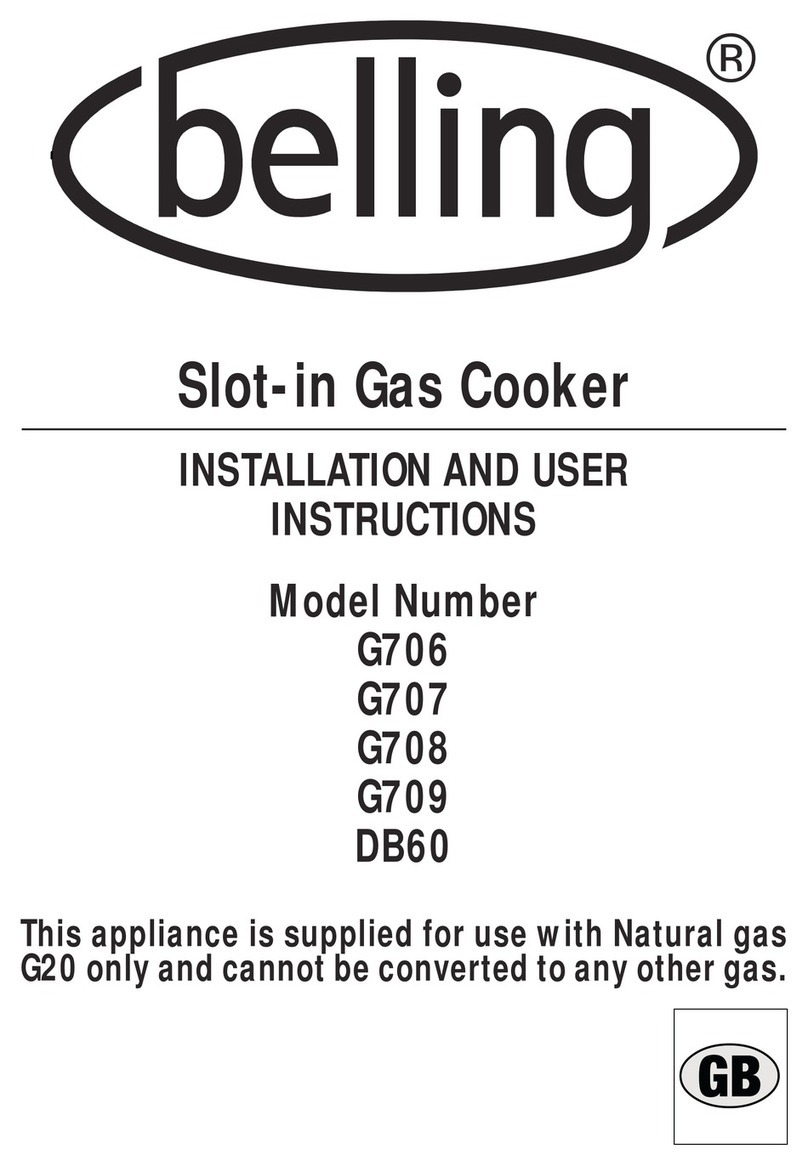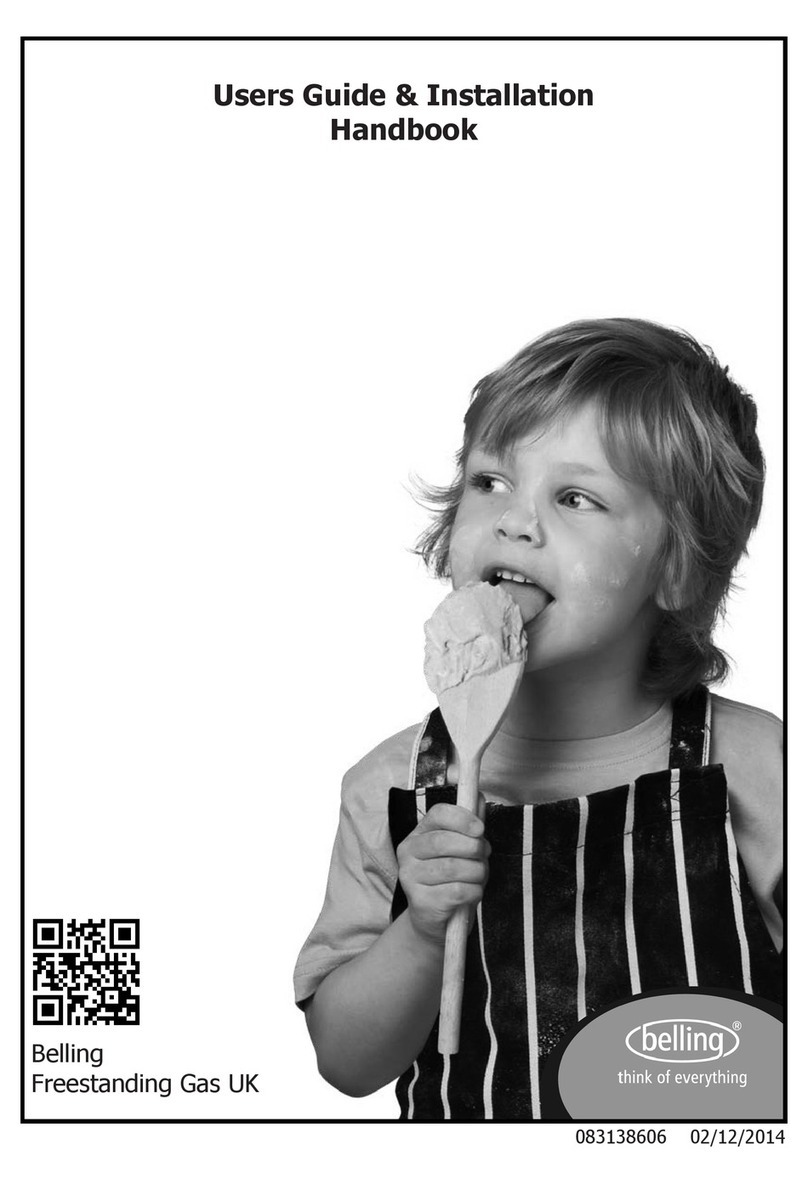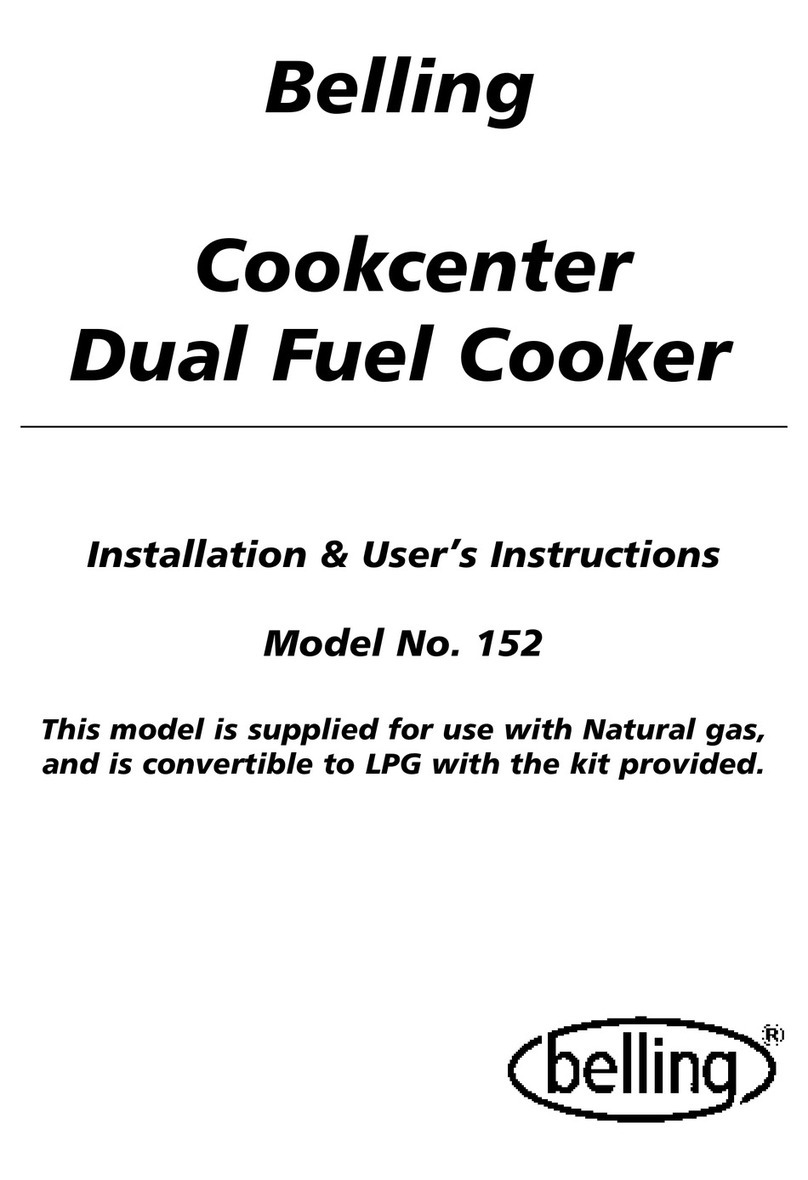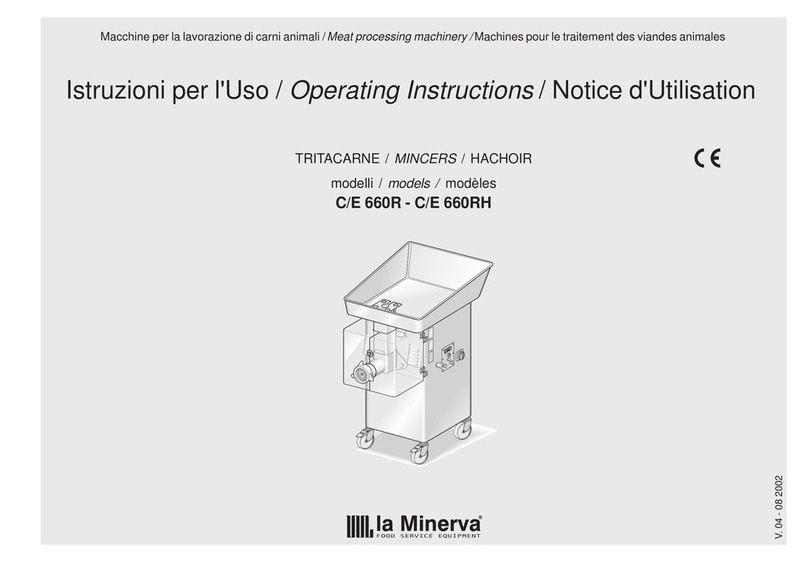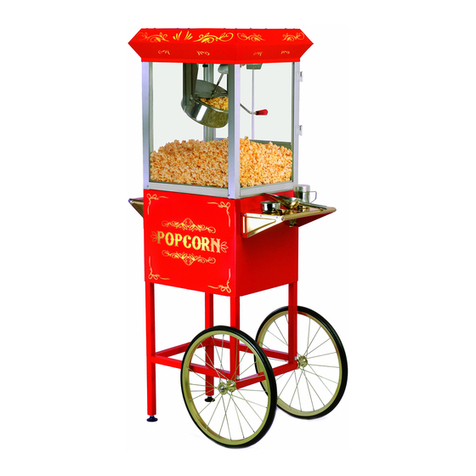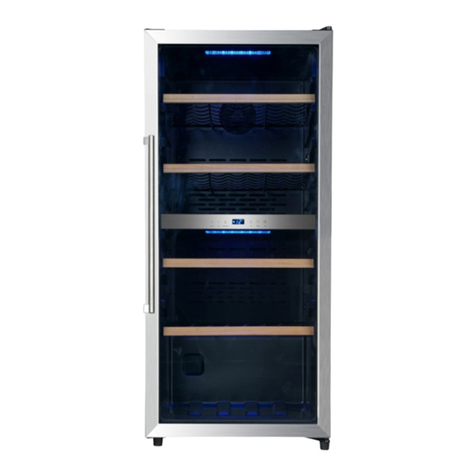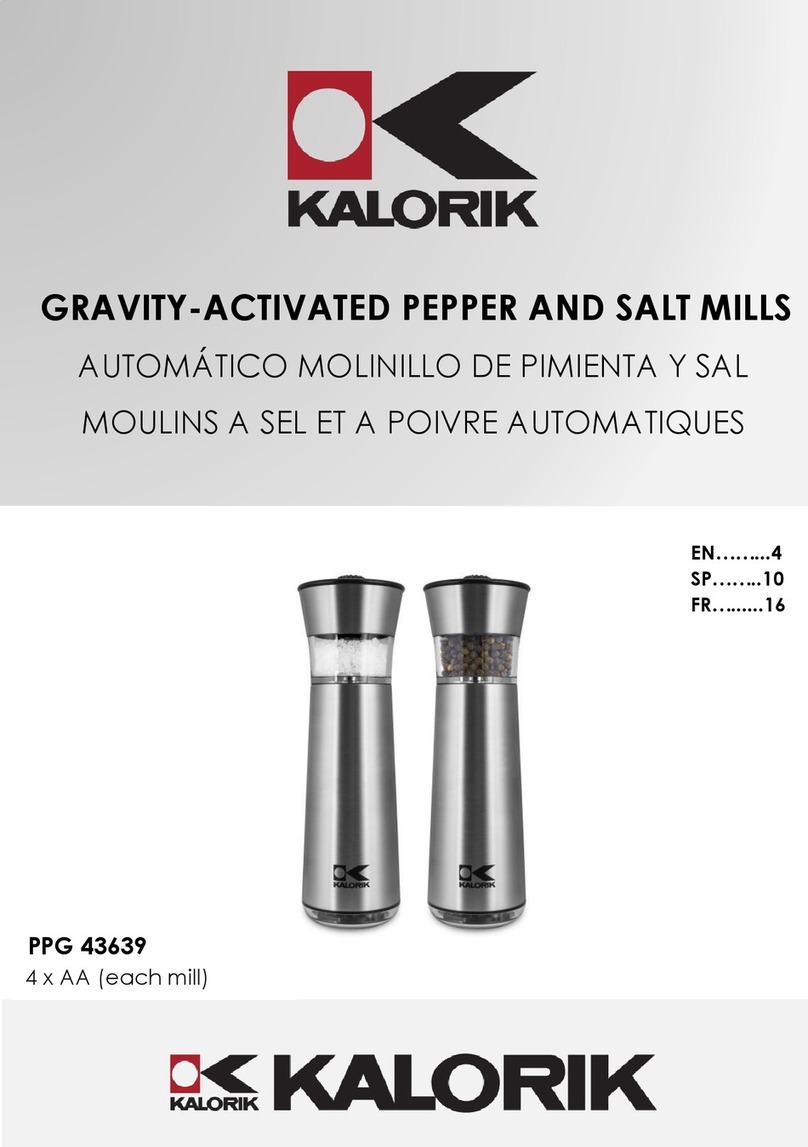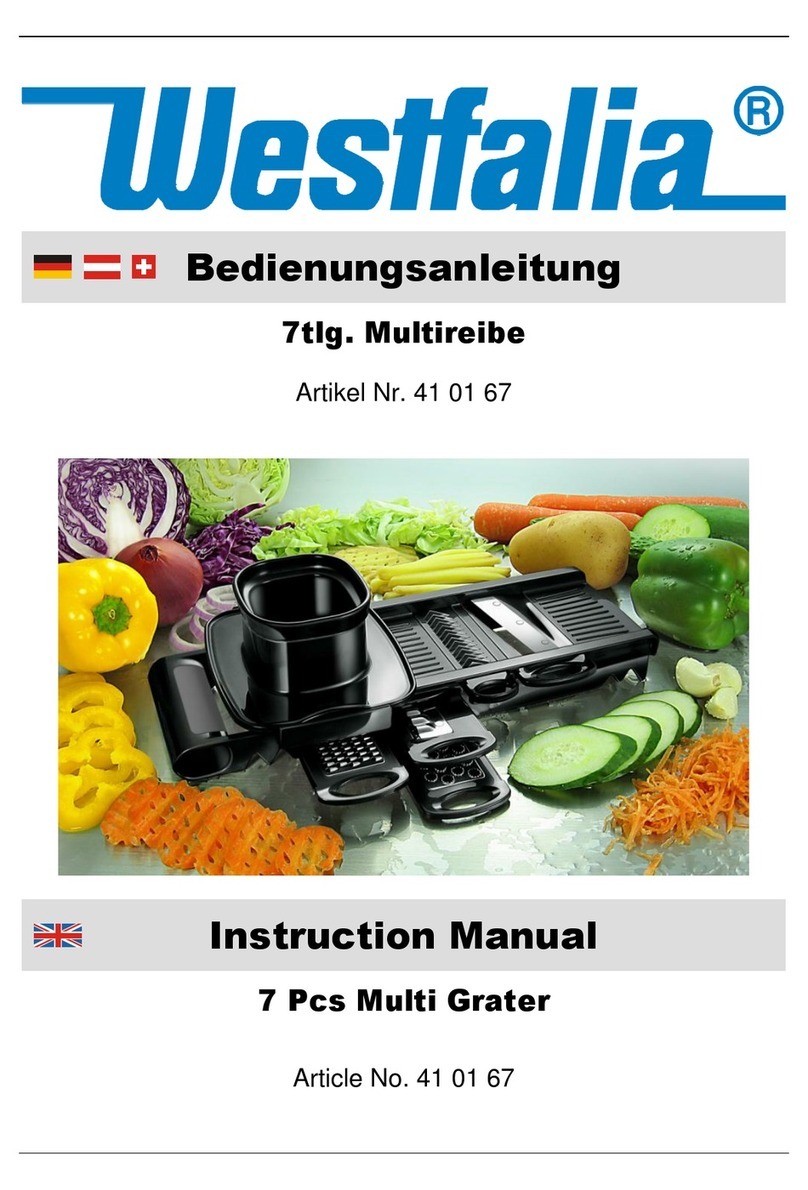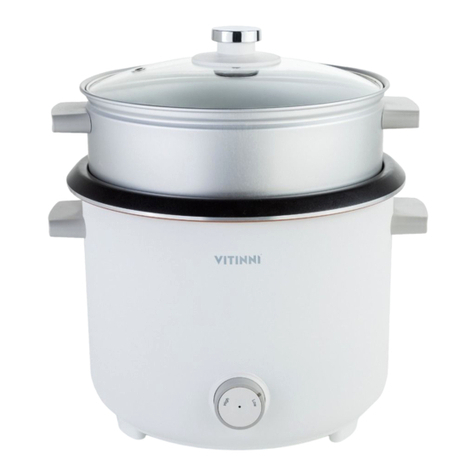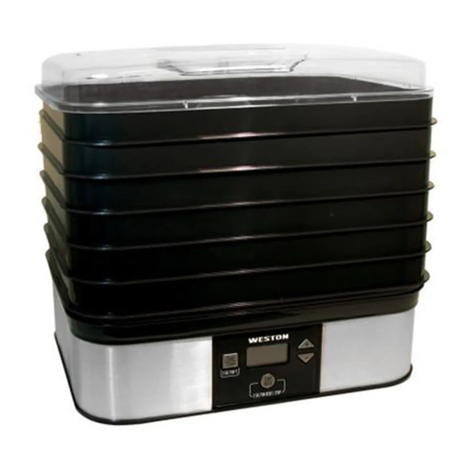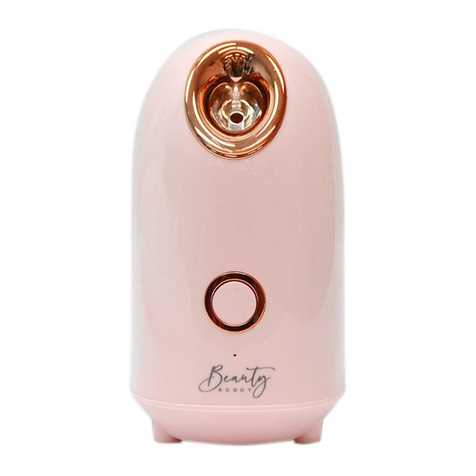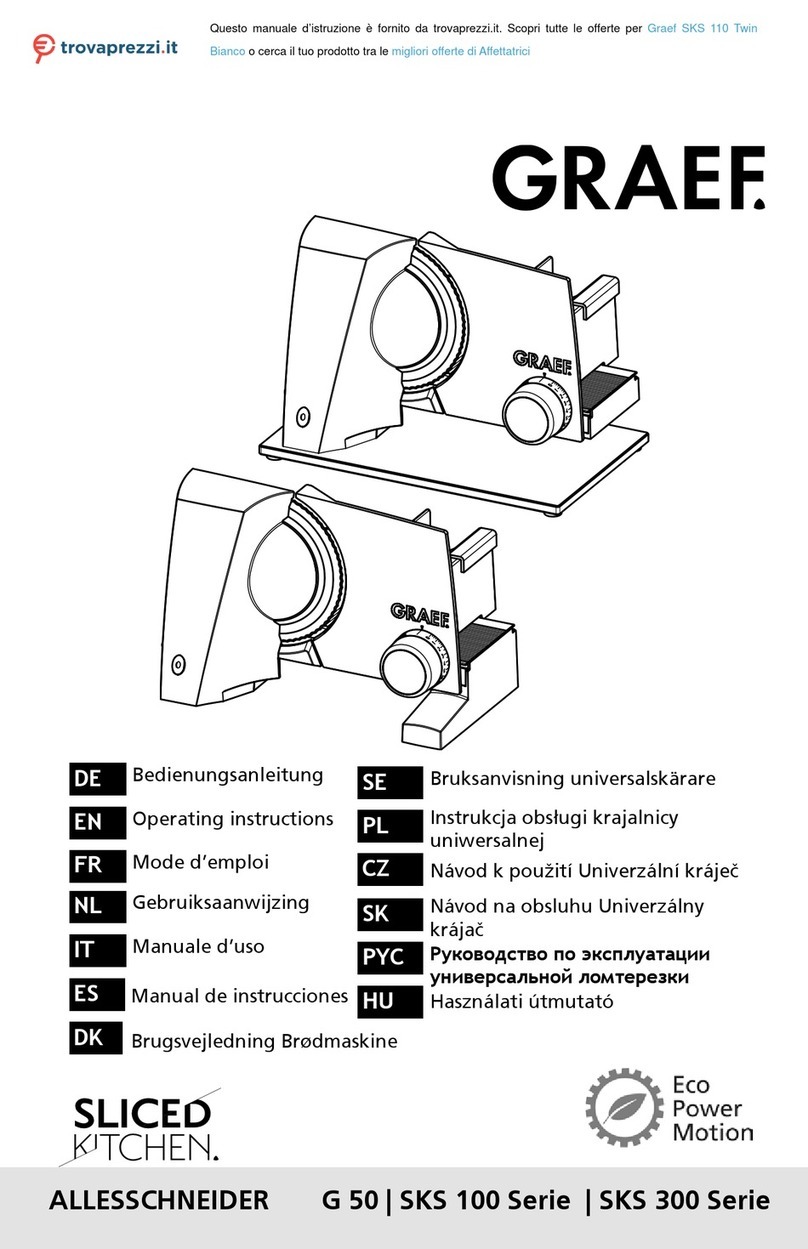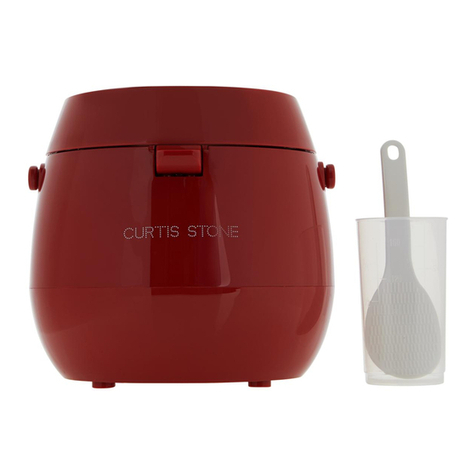USING THE TOP OVEN - GAS
Using the top oven
Ignition
Push in and turn the top oven control knob
anticlockwise to the ‘FULL ON’ position
(gas mark 9). Hold the control knob in,
and press the ignition switch or hold a
lighted match or taper to the burner, until
the burner lights. Hold the control knob
in for 15 seconds. Do not hold the control
knob in for longer that 15 seconds. If
the burner fails to light within this time,
release the control knob and wait one
minute before attempting further ignition.
Turn the control knob to the required
setting.
To switch off, return the control knob to the
off position.
Using the top oven
The top oven can be used in the same way
as the main oven, to cook the full range of
dishes, but it is a SECONDARY oven and
there are some differences.
Foods cooked in the top oven should be
in relation to the oven size. Larger dishes,
or food which may rise during cooking,
should be cooked in the main oven.
Large items, wide tins and tall items such
as rich fruit cakes should be cooked in the
main oven to obtain optimum results.
Notes:
As part of the cooking process, hot air
is expelled through a vent at the top of
the oven(s). When opening the oven
door, care should be taken to avoid any
possible contact with potentially hot air,
since this may cause discomfort to people
with sensitive skin. We recommend that
you hold the underneath of the oven door
handle.
Preheating
Always preheat the top oven for 15
minutes. However, if the main oven
is being used at the same time, then
preheating may not be necessary. The
cooking time may need to be shortened
slightly, or the cooking temperature
adjusted, to allow for heat transfer from
the main oven to the top oven if both
ovens are used together.
If you are not preheating the oven, the
cooking times in the baking guide may
need to be extended, as they are based on
a preheated oven.
The oven must be preheated when
reheating frozen or chilled foods, and we
recommend preheating for yeast mixtures,
batters, soufflés and whisked sponges.
Put the oven shelves in the position
required before preheating the oven.
Oven light
Press the light button on the facia panel.
Zones of heat
The temperature at the centre of the oven
corresponds with the selected gas mark
and is slightly higher towards the top of
the oven and slightly lower towards the
oven base.
These zones of heat can be useful
as different dishes requiring different
temperatures can be cooked at the same
time, when more than one shelf is used.
The temperature at the oven base is
suitable for cooking baked vegetables,
baked fruit, milk pudding etc, and for
warming bread rolls, soup, coffee, or
ovenproof plates and dishes.
If you find that over a period of time,
the oven becomes hotter when used at a
particular gas mark, the thermostat may
need to be replaced.





















